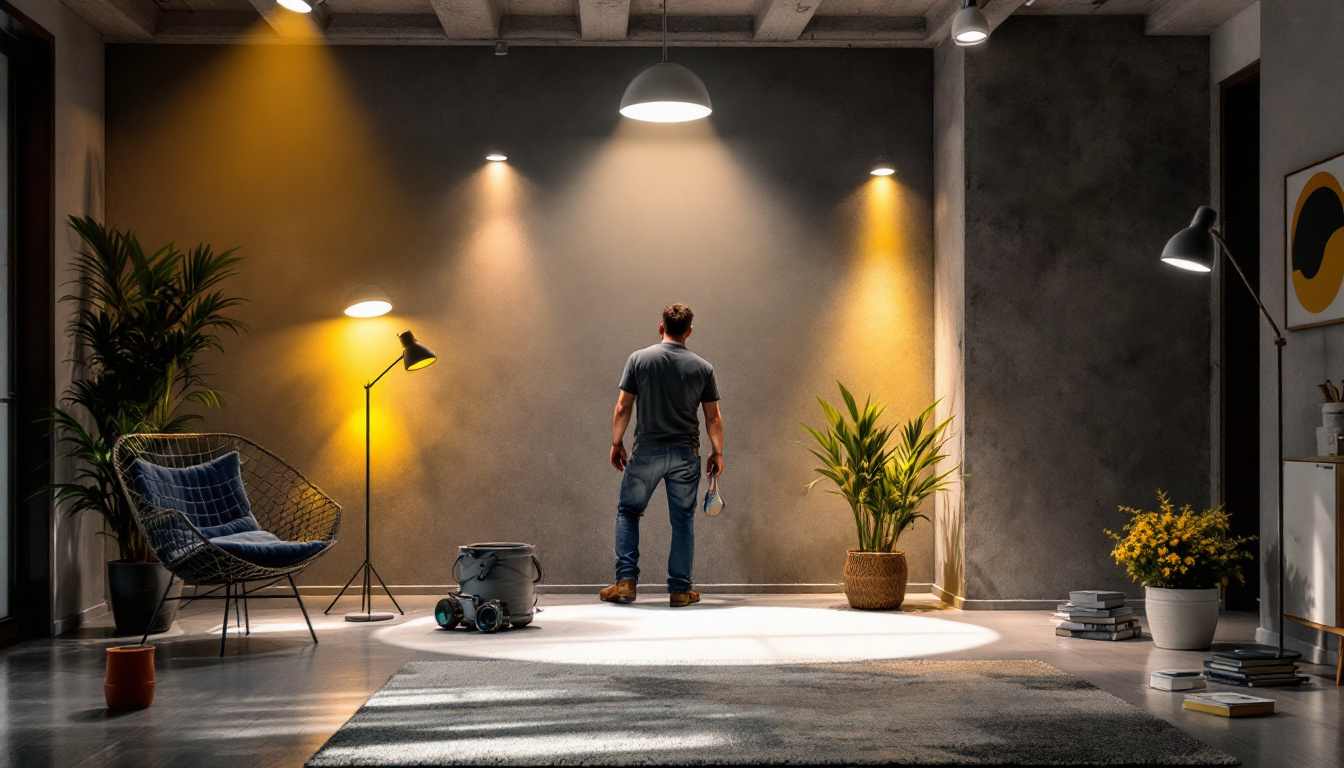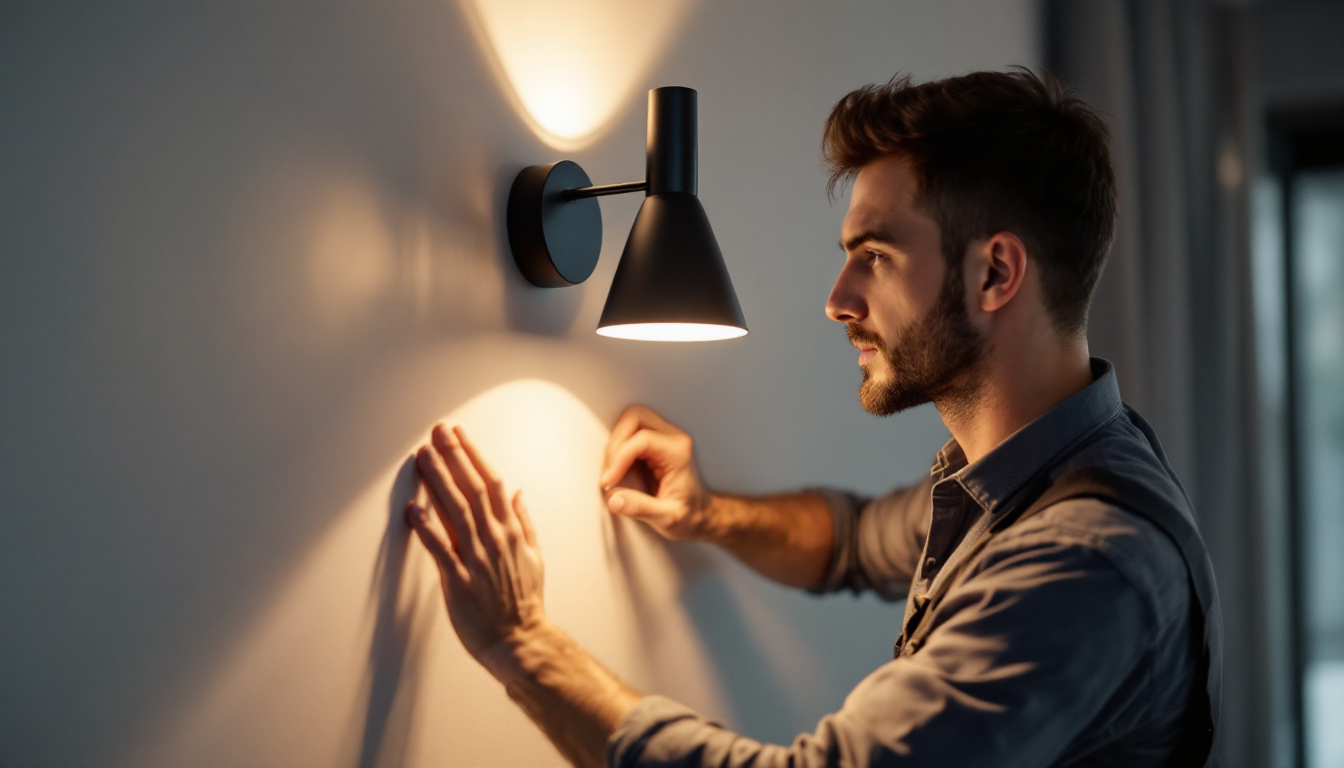
Lighting plays a crucial role in enhancing the aesthetics and functionality of spaces. For lighting contractors, understanding the best practices for selecting lights for can lights is essential. This article delves into the various aspects of can lighting, including types of bulbs, installation techniques, and energy efficiency considerations.
Can lights, also known as recessed lights, are a popular choice in modern lighting design. They offer a sleek, unobtrusive look while providing ample illumination. These fixtures are installed above the ceiling line, allowing for a clean and streamlined appearance. However, the effectiveness of can lights largely depends on the choice of bulbs and installation techniques.
When selecting can lights, it is essential to understand the different types available. The most common types include new construction, remodel, and adjustable can lights. New construction can lights are designed for use in homes that are still being built, while remodel can lights are ideal for retrofitting existing spaces. Adjustable can lights allow for directional lighting, making them suitable for highlighting artwork or architectural features. Additionally, there are also low-profile can lights, which are perfect for areas with limited ceiling space, such as basements or hallways. These fixtures can provide the same level of illumination without the bulkiness of traditional can lights, making them a versatile choice for various applications.
The choice of bulbs for can lights can significantly impact the overall lighting quality. LED bulbs are increasingly popular due to their energy efficiency and longevity. They produce less heat and have a longer lifespan than traditional incandescent bulbs. Additionally, LED options are available in various color temperatures, allowing contractors to create the desired ambiance in a space. For instance, warmer color temperatures (around 2700K to 3000K) can create a cozy and inviting atmosphere, ideal for living rooms and bedrooms, while cooler temperatures (4000K to 5000K) are often preferred for workspaces or kitchens, where bright, clear light is essential for tasks. Moreover, dimmable LED options can further enhance flexibility, allowing homeowners to adjust the brightness according to their needs and mood.
Proper installation is critical for maximizing the effectiveness of can lights. Contractors should ensure that the fixtures are installed at the correct height and spaced appropriately to avoid uneven lighting. It is also important to consider the type of ceiling and insulation when installing can lights, as these factors can influence the performance and safety of the fixtures. For instance, in insulated ceilings, it is crucial to use IC-rated can lights, which are designed to be in contact with insulation without posing a fire hazard. Additionally, the placement of can lights should be carefully planned to avoid creating shadows or overly bright spots; a common rule of thumb is to space the lights approximately 4 to 6 feet apart, depending on the height of the ceiling. Furthermore, incorporating a lighting plan that considers the room’s function and furniture layout can enhance both aesthetics and functionality, ensuring that the lighting complements the overall design of the space.
Choosing the right bulbs for can lights is not just about aesthetics; it also involves understanding the technical specifications and requirements for different applications. Here are some best practices to consider when selecting bulbs for can lights.
Color temperature is measured in Kelvin (K) and can significantly affect the mood of a space. For warm, inviting environments, bulbs with a color temperature of around 2700K to 3000K are ideal. For more neutral lighting, 3500K to 4100K is suitable, while cooler temperatures (5000K and above) are often used in commercial settings or areas requiring task lighting. Understanding the intended use of the space will guide the selection of the appropriate color temperature. Additionally, consider the color rendering index (CRI) of the bulbs, which measures how accurately colors appear under the light. A higher CRI (above 90) is particularly beneficial in settings such as art studios or retail spaces, where true color representation is crucial.
Lumen output is another critical factor to consider. It measures the brightness of a bulb, and selecting the right lumen output is essential for achieving the desired illumination levels. For general lighting in living areas, around 800 to 1600 lumens per fixture may be appropriate. In contrast, task lighting may require higher lumen outputs to ensure sufficient visibility. It’s also important to think about the layout of the space; for example, an open-concept living area may need more lumens distributed across multiple fixtures to avoid dark corners. Moreover, the height of the ceiling can influence how much lumen output is necessary, as higher ceilings may require brighter bulbs to achieve the same effect as lower ceilings.
When installing can lights, it is essential to consider whether the selected bulbs are compatible with dimmer switches. Not all LED bulbs work seamlessly with dimmers, which can lead to flickering or reduced lifespan. Ensuring compatibility will enhance user experience and provide flexibility in adjusting lighting levels according to needs. Additionally, it’s wise to invest in high-quality dimmer switches specifically designed for LED bulbs, as these can provide smoother dimming capabilities and reduce the risk of buzzing noises that can occur with lower-quality options. Furthermore, consider the overall wattage capacity of the dimmer switch; exceeding this limit can lead to performance issues and potentially damage the bulbs.
In today’s environmentally conscious market, energy efficiency is a top priority for many clients. Lighting contractors have a responsibility to recommend solutions that not only meet aesthetic requirements but also promote sustainability. Here are some ways to ensure energy efficiency in can lighting.
As mentioned earlier, LED bulbs are a superior choice for can lights due to their energy efficiency. They consume significantly less energy compared to incandescent or halogen bulbs, which translates to lower electricity bills for clients. Additionally, LEDs have a longer lifespan, reducing the frequency of replacements and waste generated from discarded bulbs.
Integrating smart lighting technology can further enhance energy efficiency. Smart bulbs and fixtures allow users to control lighting remotely, schedule on/off times, and adjust brightness levels through mobile applications or voice commands. This level of control not only improves convenience but also encourages users to adopt energy-saving habits.
When installing can lights, ensuring proper insulation and sealing is vital to prevent energy loss. Unsealed fixtures can lead to air leaks, which compromise the energy efficiency of heating and cooling systems. Contractors should use airtight can lights and ensure they are properly insulated to maintain optimal energy performance.
Beyond functionality and efficiency, the design aspect of can lights is crucial in creating visually appealing spaces. Lighting contractors should consider the following design elements when planning and installing can lights.
Layered lighting involves combining different types of lighting to create a balanced and dynamic atmosphere. Can lights can serve as ambient lighting, while other sources such as pendant lights or wall sconces can provide accent and task lighting. By strategically placing can lights, contractors can enhance the overall design and functionality of a space.
The spacing and placement of can lights are essential for achieving even illumination. A common guideline is to space can lights approximately 4 to 6 feet apart, depending on the height of the ceiling and the wattage of the bulbs being used. Proper placement can help avoid dark spots and ensure a well-lit environment.
Can lights can be used to draw attention to architectural features such as beams, columns, or artwork. By strategically positioning fixtures, contractors can create focal points that enhance the visual appeal of a space. This technique not only adds depth to the design but also showcases the unique elements of the environment.
Even experienced lighting contractors can make mistakes when it comes to selecting and installing can lights. Being aware of common pitfalls can help ensure successful projects and satisfied clients.
One of the most common mistakes is overlighting or underlighting a space. Overly bright spaces can feel harsh and uninviting, while insufficient lighting can lead to safety hazards and discomfort. Conducting a thorough assessment of the space and understanding the client’s needs can help avoid these issues.
Ceiling height plays a significant role in the effectiveness of can lights. In spaces with high ceilings, deeper recessed fixtures may be necessary to ensure adequate illumination. Conversely, in low ceilings, shallow fixtures can help maintain a streamlined look without sacrificing light quality. Ignoring ceiling height can lead to ineffective lighting solutions.
Maintenance is an often-overlooked aspect of lighting design. Selecting bulbs that are difficult to access or requiring frequent replacements can lead to client dissatisfaction. Contractors should consider the ease of maintenance when recommending fixtures and bulbs, ensuring that clients can easily manage their lighting systems.
In the world of lighting design, can lights offer versatility and elegance, making them a popular choice for various applications. For lighting contractors, understanding the best practices for selecting bulbs, ensuring energy efficiency, and avoiding common mistakes is essential for delivering successful projects. By keeping these considerations in mind, contractors can create beautifully lit spaces that meet the needs and expectations of their clients.
As the industry continues to evolve, staying informed about the latest trends and technologies will further enhance the capabilities of lighting contractors. Embracing innovation while adhering to best practices ensures that projects not only meet aesthetic goals but also promote sustainability and efficiency.
Ultimately, the right approach to can lighting can transform a space, creating environments that are not only functional but also inviting and inspiring. By prioritizing quality, efficiency, and design, lighting contractors can elevate their work and contribute to the creation of exceptional spaces.
Ready to elevate your lighting projects with the best in spec-grade lighting? Look no further than LumenWholesale, where we provide contractors with superior lighting solutions at unbeatable wholesale prices. Our commitment to quality and affordability means you can access a wide range of top-tier lighting products tailored to your needs, without the extra costs. Plus, with free shipping on bulk orders, you can stock up on everything you need to make your spaces shine. Don’t compromise on quality or value—Wholesale Lighting at the Best Value is just a click away. Transform your lighting designs with LumenWholesale today.

Discover effective strategies and innovative techniques for lighting contractors in this comprehensive guide.

Discover the latest trends in architectural lighting that every contractor needs to know.

Discover expert insights and best practices for selecting and installing pendant chandeliers in this comprehensive guide tailored for lighting contractors.

Discover essential tips and best practices for lighting contractors to effectively install and optimize lighting sconces.